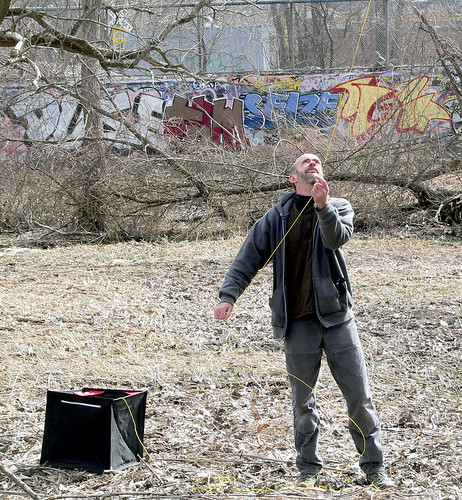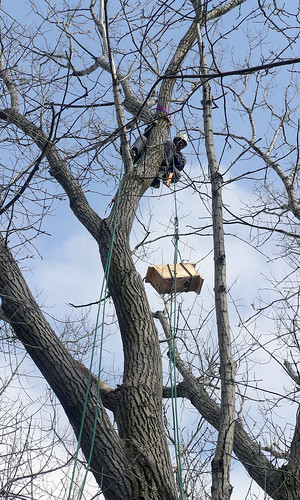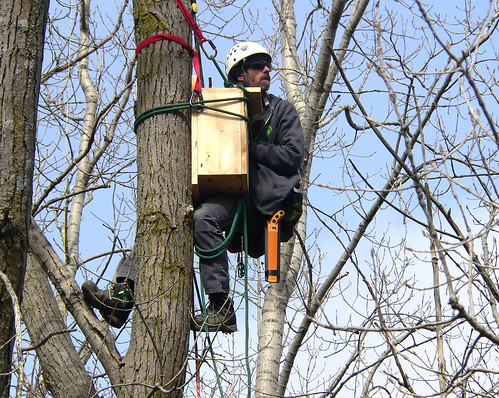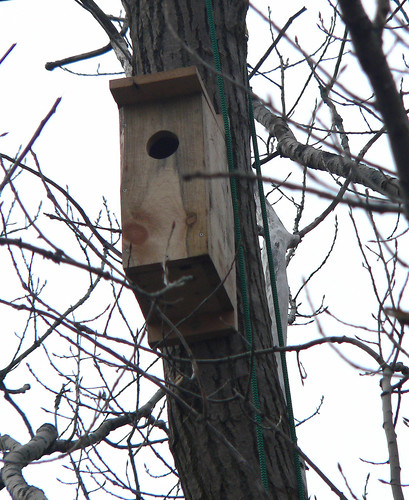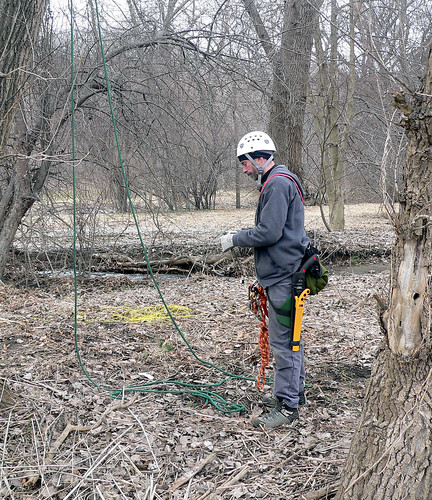moss
ArboristSite Guru
On Saturday I'm going to be installing a nesting box intended for a Kestrel (small falcon species) in an Eastern Cottonwood around 25-30 ft. off the ground. I've assessed the tree and it is sound. I'll be climbing up rope and harness (I'm an experienced climber), rig the box up (it's fairly large) and attach it. One of the requirements is that the box be set level so I'm thinking I'll use two (or 4) lag bolts screwed into pre-drilled holes in the tree to hold the box and adjust the level. I'm also thinking that I'll leave some space between the box and the tree to allow for growth. I'll be monitoring and maintaining the box for as long as it's on the tree.
Any comments or suggestions? Is galvanized good enough or should I use stainless bolts? Any pro or cons there as far as affecting the health of the tree? Any alternate non-invasive attachment methods to suggest?
Thanks,
-moss
Any comments or suggestions? Is galvanized good enough or should I use stainless bolts? Any pro or cons there as far as affecting the health of the tree? Any alternate non-invasive attachment methods to suggest?
Thanks,
-moss
Last edited:





